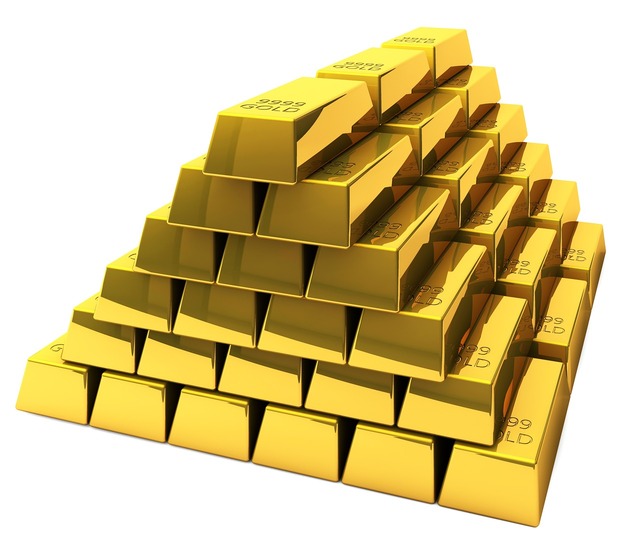The difference between Comex Gold futures and the spot market
Further information » Comex Gold Futures versus Spot Market Purchasing
Comex Gold Futures Overview
- 8 minutes read
Today’s investors have different ways to invest in precious metals. One popular option is to purchase physical gold, silver, platinum or palladium on the spot market and store it yourself. Alternatively, those who prefer paper gold can place their capital in gold futures contracts. Comex is the world’s primary trading platform for futures products from the commodity sector.
Comex is short for Commodities Exchange and was originally founded in New York in 1933. At the time, it was considered one of the most influential stock exchanges in the United States. In the mid-1990s, Comex merged with the New York Mercantile Exchange (Nymex) to create the largest physical commodity futures exchange in the world. In the wake of the global financial crisis in 2008, both money markets were taken over by the Chicago-based CME Group and today operate as designated contract markets for the world’s largest options exchange.
What is the Comex and what products are traded?
The Comex exchange is a separate division within the CME Group. It specializes in futures products derived from base-, ferrous- and precious metals. These include aluminium, lead, iron ore, gold, copper, silver, steel and zinc, all of which are traded as futures. Metals futures contracts are considered a subset of general futures contracts.

Put simply, a future is a contract between two parties that becomes legally valid at a defined point in time in the future. The contract states that a currency, a security or a commodity must be acquired at a previously fixed price when that date arrives. The purchase of a futures contract is a binding obligation for the contractual partner, i.e. the investor. Futures are traded on exchanges up until their expiry date. With gold and silver futures, this usually happens via the Comex futures exchange.
What gold products are traded via futures?
The Comex futures market primarily focuses on large gold bars, such as LMBA-certified bars of 100 or 400 troy ounces and one kilogram. Each of these represents a high commodity value in its own right. A gold futures contract is traded for many months. The primary trading months are February, April, June, October and December, and contracts have the highest liquidity during these months.
However, investors do not have to pay for an entire contract, but can instead deposit part of the total value, called margin money, as collateral. With this leverage, a distinction is always made between the minimum amount (the initial margin) and the minimum deposit (maintenance margin). The latter designates the lowest point an investor’s futures position can be allowed to reach. If the value then slips below this specified threshold, the investor must add to the margin deposit. An investor would then receive a “margin call” to do this.
Is there any physical delivery of the gold?
If a buyer has bought a gold future with a fixed date, that buyer can take delivery of the precious metal on First Notice Day, the date specified on the futures contract for the investor to receive the amount of gold allocated. Alternatively, the investor has the option to convert the present contract into a new future with a fresh future due date.
This is actually the most common approach, which generally means significantly more gold futures are traded than physical gold itself. The key metric of ‘open interest’ determines the amount of open positions in futures contracts. The higher this value, the more capital there is flowing into the futures market.
Not every investor wants to take delivery of physical gold, which is why the futures market anticipates that not every contract will be fulfilled. Nevertheless, investors have a right to expect delivery of the amount of the futures they have bought. If this is not possible – for example because the value of the smallest gold bar exceeds the contractual sum – compensation usually takes the form of a cash settlement. So, instead of the precious metal, the buyer receives the equivalent value in US dollars. According to Comex experts, any “short squeeze” preventing the delivery of gold or dollars is considered unlikely.
What do contango, arbitrage and backwardation mean?
A key feature of gold futures contracts is that the futures price for gold is usually well above the spot price (spot market price) – usually quoted as the price for a troy ounce (31.103 grams) of the precious metal. This is determined daily on the international stock exchanges, and is primarily defined by the principle of supply and demand. The spot price is initially quoted in US dollars and then calculated for specific markets using national currencies (whose values are also determined by the stock exchange) such as the Swiss franc.
Based on the gold futures, the gold market usually moves in what is described as “contango”. This situation occurs when the price for the future delivery of a commodity moves higher than the spot rate, as the spot price is also called. In an imaginary curve, the futures price is typically oriented upwards, and the further away the delivery date is, the higher the price. And as that date gets closer, the more the futures price tends to align itself with the spot price. This also takes into account the costs that physical gold would typically incur for storage or transportation – referred to as “carry costs” in this context. Thus, the purchase and sale of gold, as well as these additional costs, are reflected in the current future pricing.
Future prices and spot prices can also converge via so-called “arbitrage effects”. This technical term refers to stock exchange transactions that profit from price, exchange rate, or interest rate differences across different markets. In securities arbitrage, securities are bought cheaply on one stock exchange and then sold at higher prices elsewhere. The difference between these prices represents the profit margin.
In complete contrast to contango activity, backwardation can sometimes be observed in the gold market. If this situation arises, the future rate will (unusually) be below the spot price on the due date. This scenario actually creates a major anomaly. In such a context, because there is already enough gold above ground in the form of bars and coins, investors could sell gold on the spot market (at the current higher price) and at the same time buy gold again as a future with delivery in, say, one month (at a lower price).
This situation can only be explained by short-term market anomalies. According to market experts, prolonged backwardation is only conceivable in the context of periods of market or systemic risk – for instance, when no one is willing to give up their gold now and put their trust in a delivery obligation in the future. This scenario would thus signify a collapse of trust.
How is futures gold different from spot gold?
Only physical gold is traded on the spot or cash market. This generally represents a less risky class of asset that is also open to novice investors with little experience. This gold can be purchased as gold coins or gold bars at precious metal exchanges or in physical or online precious metal retail shops. Spot gold is of particular interest to those investors who prefer to own the actual precious metal. However, it must then be safely housed. For example with a private storage company like OrSuisse in Switzerland.
A gold futures contract, on the other hand, is paper gold. Although physical gold is deposited to create this investment product, it is rarely accessed. However, a gold future at the specified date is equivalent to a valid claim for gold bullion, or its US dollar equivalent. Gold futures contracts are therefore particularly suitable for investors with high-level expertise in futures trading, for whom physical gold ownership is a secondary consideration, or not required at all.
The alternative: physical gold and tradable warehouse receipts
But is there a way to combine these two options? The answer is: yes, and it is just as easy as owning physical gold. Even though OrSuisse offers international customers solutions for bank-independent storage of gold or white metals in Switzerland, as a specialist warehousing company, it does not trade in precious metals on its own account. However, precious metals can be purchased from our business associate Echtgeld AG, for example, who will then deliver the purchased goods direct to a storage facility. Domestic warehouses or duty-free warehouses are available for storing silver ex-VAT.
Investors receive special warehouse receipts with bar or seal numbers confirming the segregated storage of their precious metals. These can then be unambiguously assigned at any time. But these documents can do more than just secure the release of goods. According to the Swiss Code of Obligations, they are also recognised as securities: So these negotiable warehouse receipts can be easily transferred to another person. They can serve as collateral for lending, be sold to authorized dealers at current precious metal prices, or be offered for sale to other investors.
Thanks to OrSuisse tradable warehouse receipts, investors can benefit from a flexible solution that combines the best of two worlds: physical precious metal on the one hand, and tradable securities at current spot prices on the other.
Comex Gold Futures Overview
- Comex is the primary trading platform for futures products in the commodity sector. This former commodity futures exchange has been part of the CME Group since 2008 and specializes in futures transactions – for example in the precious metals sector.
- The Comex futures market offers gold contracts for investors.
- These are gold futures that can be purchased on a defined date using margins to secure the contract.
- When futures expire, investors have the right to be allocated physical gold. Alternatively, a payout can be arranged in US dollars.
- A futures position can also be converted into a new futures contract.
- To be profitable, futures transactions are ideally subject to contango. Their price is then well above the spot rate.
- Only physical precious metals are traded on the spot market, while paper gold is traded on the futures market.
- OrSuisse tradable warehouse receipts can be used to combine physical precious metals with securities, thus facilitating a safer alternative to futures transactions.
